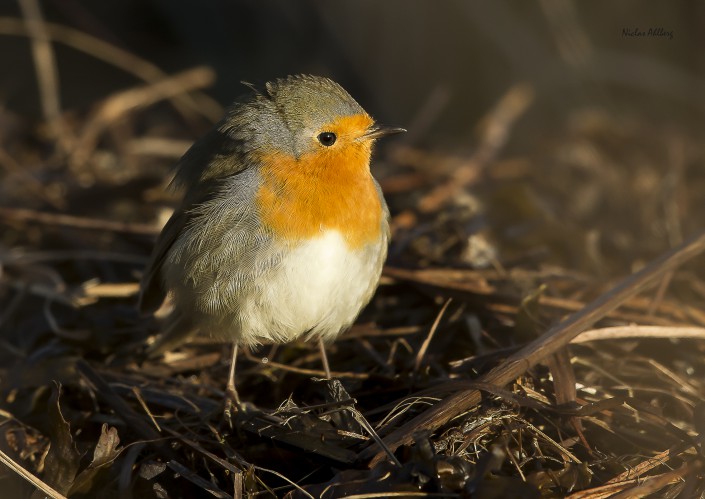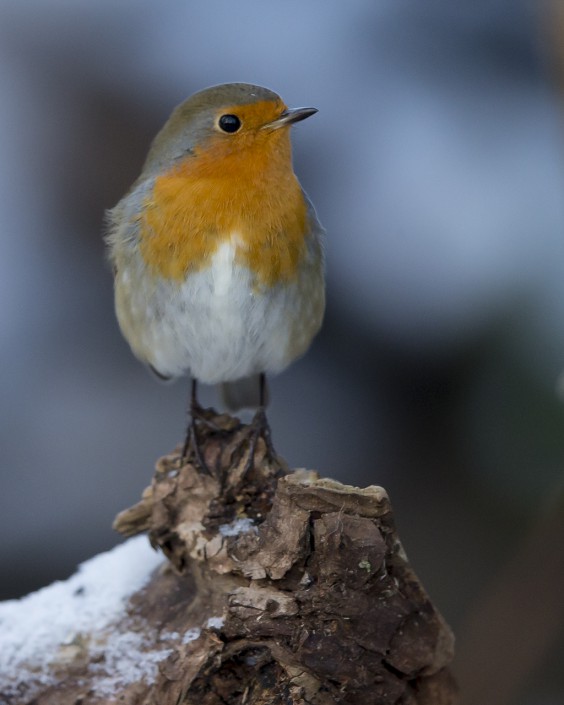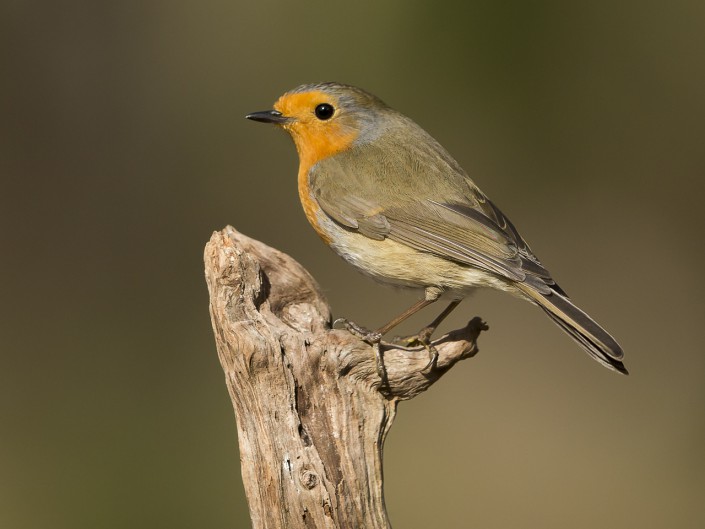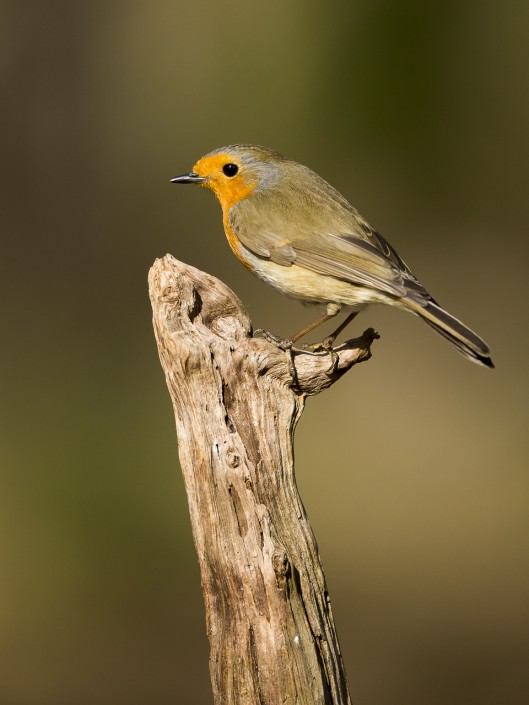This post is also available in: Swedish
European robin – Erithacus rubecula
European robin – Erithacus rubecula
European Robin known simply as the robin or robin redbreast in the British Isles and Ireland is a small insectivorous passerine bird, specifically a chat, that was formerly classed as a member of the thrush family (Turdidae), but is now considered to be an Old World flycatcher. Around 12.5–14.0 cm (5.0–5.5 in) in length, the male and female are similar in colouration, with an orange breast and face lined with grey, brown upperparts and a whitish belly. It is found across Europe, east to Western Siberia and south to North Africa; it is sedentary in most of its range except the far north.
The term robin is also applied to some birds in other families with red or orange breasts. These include the American robin (Turdus migratorius), which is a thrush, and the Australasian robins of the family Petroicidae, the relationships of which are unclear. The adult European robin is 12.5–14.0 cm (5.0–5.5 in) long and weighs 16–22 g (9/16–13/16 oz), with a wingspan of 20–22 cm (8–9 in). The male and female bear similar plumage; an orange breast and face (more strongly coloured in the otherwise similar British subspecies E. r. melophilus), lined by a bluish grey on the sides of the neck and chest. The upperparts are brownish, or olive-tinged in British birds, and the belly whitish, while the legs and feet are brown. The bill and eyes are black. Juveniles are a spotted brown and white in colouration, with patches of orange gradually appearing.
It sings beautifully
Recording by Niels Van Doninck from Xeno canto





























